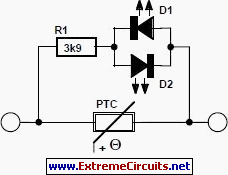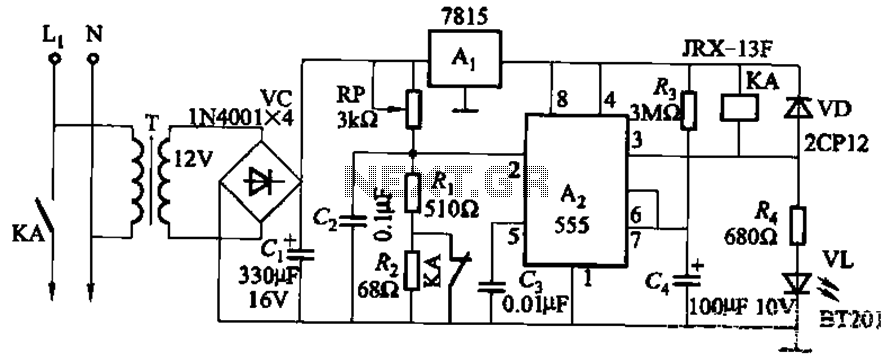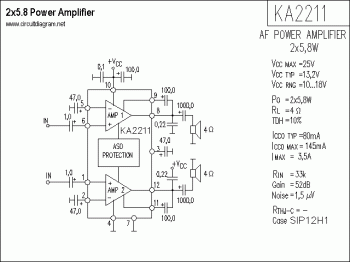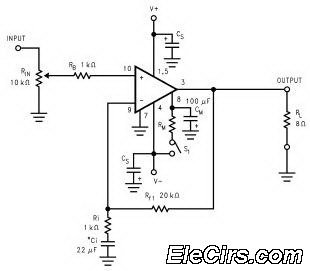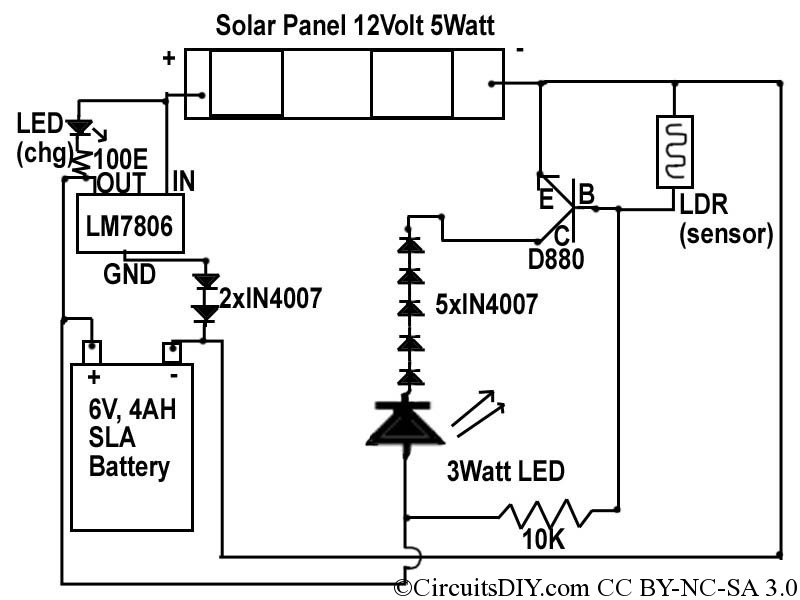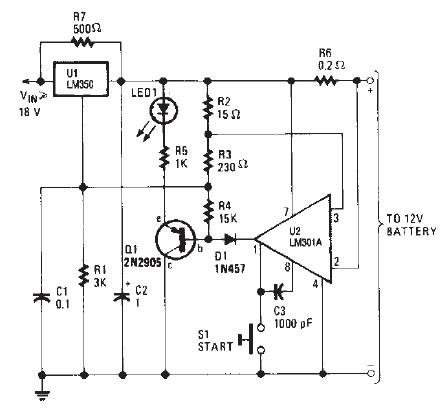
Spy Telephone Circuit
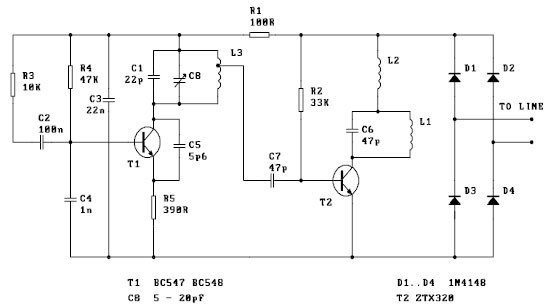
This FM spy telephone circuit is connected in series with the phone line. When there is a signal on the wires, this transmitter will radiate airwaves through the wires.
This FM spy telephone circuit operates by integrating with the existing phone line, allowing it to monitor and transmit audio signals. The circuit is designed to be installed in series, meaning it is placed in line with the telephone's wiring. This configuration enables the circuit to capture audio signals during phone calls.
The core component of the circuit is a frequency modulation (FM) transmitter, which converts the audio signals from the phone line into radio waves. These radio waves can then be picked up by a compatible receiver within a certain range. The circuit typically consists of several key elements: a microphone or audio input stage, modulation circuitry, an oscillator, and an antenna.
The audio input stage is responsible for capturing the sound from the phone line, which is then fed into the modulation circuitry. Here, the audio signal is used to modulate a carrier frequency generated by the oscillator. The modulation process encodes the audio information onto the carrier wave, allowing it to be transmitted wirelessly.
The antenna is crucial for radiating the modulated signals into the air. The design of the antenna must be appropriate for the frequency being used to ensure effective transmission. Additionally, power supply considerations are essential, as the circuit requires a stable voltage to operate efficiently.
Overall, this circuit is a sophisticated device that leverages existing telephone infrastructure to enable covert audio monitoring through FM transmission. Its design must adhere to relevant legal and ethical standards, as the use of such devices may be subject to regulations regarding privacy and surveillance.This FM spy telephone circuit is mounted serrial with the phone line. When is signal on the wires this transmitter will radiate airwaves thru the wires wic.. 🔗 External reference
This FM spy telephone circuit operates by integrating with the existing phone line, allowing it to monitor and transmit audio signals. The circuit is designed to be installed in series, meaning it is placed in line with the telephone's wiring. This configuration enables the circuit to capture audio signals during phone calls.
The core component of the circuit is a frequency modulation (FM) transmitter, which converts the audio signals from the phone line into radio waves. These radio waves can then be picked up by a compatible receiver within a certain range. The circuit typically consists of several key elements: a microphone or audio input stage, modulation circuitry, an oscillator, and an antenna.
The audio input stage is responsible for capturing the sound from the phone line, which is then fed into the modulation circuitry. Here, the audio signal is used to modulate a carrier frequency generated by the oscillator. The modulation process encodes the audio information onto the carrier wave, allowing it to be transmitted wirelessly.
The antenna is crucial for radiating the modulated signals into the air. The design of the antenna must be appropriate for the frequency being used to ensure effective transmission. Additionally, power supply considerations are essential, as the circuit requires a stable voltage to operate efficiently.
Overall, this circuit is a sophisticated device that leverages existing telephone infrastructure to enable covert audio monitoring through FM transmission. Its design must adhere to relevant legal and ethical standards, as the use of such devices may be subject to regulations regarding privacy and surveillance.This FM spy telephone circuit is mounted serrial with the phone line. When is signal on the wires this transmitter will radiate airwaves thru the wires wic.. 🔗 External reference
